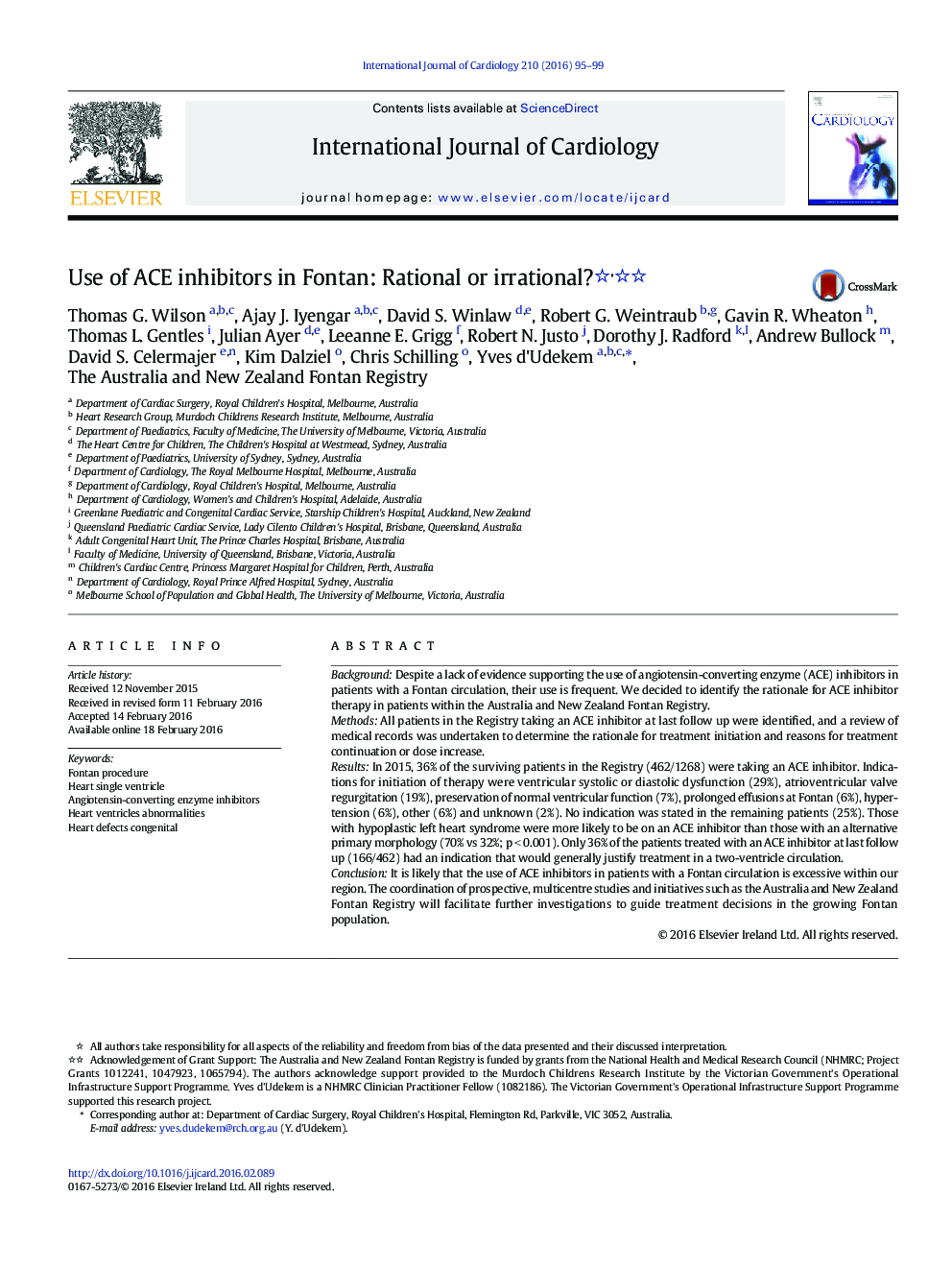| Article ID | Journal | Published Year | Pages | File Type |
|---|---|---|---|---|
| 5964288 | International Journal of Cardiology | 2016 | 5 Pages |
BackgroundDespite a lack of evidence supporting the use of angiotensin-converting enzyme (ACE) inhibitors in patients with a Fontan circulation, their use is frequent. We decided to identify the rationale for ACE inhibitor therapy in patients within the Australia and New Zealand Fontan Registry.MethodsAll patients in the Registry taking an ACE inhibitor at last follow up were identified, and a review of medical records was undertaken to determine the rationale for treatment initiation and reasons for treatment continuation or dose increase.ResultsIn 2015, 36% of the surviving patients in the Registry (462/1268) were taking an ACE inhibitor. Indications for initiation of therapy were ventricular systolic or diastolic dysfunction (29%), atrioventricular valve regurgitation (19%), preservation of normal ventricular function (7%), prolonged effusions at Fontan (6%), hypertension (6%), other (6%) and unknown (2%). No indication was stated in the remaining patients (25%). Those with hypoplastic left heart syndrome were more likely to be on an ACE inhibitor than those with an alternative primary morphology (70% vs 32%; p < 0.001). Only 36% of the patients treated with an ACE inhibitor at last follow up (166/462) had an indication that would generally justify treatment in a two-ventricle circulation.ConclusionIt is likely that the use of ACE inhibitors in patients with a Fontan circulation is excessive within our region. The coordination of prospective, multicentre studies and initiatives such as the Australia and New Zealand Fontan Registry will facilitate further investigations to guide treatment decisions in the growing Fontan population.
